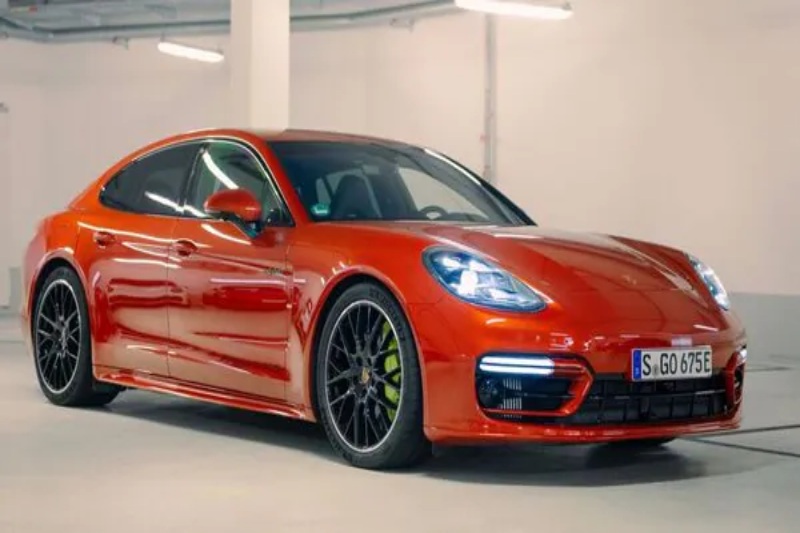Porsche Expands the Number of Hybrid Panameras it Offers to Two

Porsche has revealed two new plug-in hybrid Panamera models as part of its effort to diversify its product line and reduce risk.
The Panamera Turbo E-Hybrid, the first of four Panamera E-Hybrid versions that will eventually be available, was launched by Porsche with the third generation Panamera late last year. The Panamera 4 E-Hybrid and the Panamera 4S E-Hybrid are the two new models that the automaker is introducing today. A later announcement will be made on the fourth model.
With the introduction of these two new models, Porsche claims to be reacting to the “significant demand for efficient and dynamic E-Hybrid powertrains.” Indeed, even as the surge in sales of pure battery-electric vehicles slows down, hybrids are becoming more and more popular in a number of areas.
But since it’s a Porsche, the price will be high. The starting price for the 4 E-Hybrid is $117,495 and for the 4S E-Hybrid is $128,795 (both figures include destination fees). Preorders will open at the end of March, with delivery anticipated to begin in the fall.
The Panamera 4 E-Hybrid would combine a “significantly revamped” 2.9-liter V6 twin-turbo engine with an output of 224 kW or 300 horsepower with a new hybrid technology to provide enhanced acceleration and torque. The combined system has a peak track speed of 174 mph, a 0-to-60 mph acceleration time of 3.9 seconds, and a maximum torque of 479 lb.-ft. Its combined power is 346 kW, or 463 hp.
A 2.9-liter, six-cylinder engine with a little better performance output of 260 kW or 348 horsepower will also be included in the 4S E-Hybrid. A maximum torque of 553 lb.-ft. and 400 kW, or 536 horsepower, will be obtained by the entire system. The Panamera 4S E-Hybrid can now reach a top track speed of 180 mph and accelerate from 0 to 60 mph in 3.5 seconds thanks to this.
These two new models have improved throttle responsiveness and a faster charging speed, among other features. With a gross capacity of 25.9 kWh, the new battery is even larger and ranks among the best plug-in hybrid batteries. According to Porsche, it has roughly 45% more capacity than its predecessors.
Under ideal circumstances, an 11-kW onboard AC charger can fully charge the battery in as little as two hours. Additionally, a brand-new electric motor that supports the gas engine will produce 140 kW, or 187 horsepower, and 331 lb.-ft. of torque on its own, making it more potent than the engine seen in the previous iteration.
When the 4 and 4S are turned on, they will both begin in totally electric E-Power mode. According to Porsche, when the battery’s state of charge falls below a certain threshold, the system will automatically transition to the Hybrid Auto mode, which controls the powertrain according to the driving conditions at that moment. Additionally, a clever navigation system transmits route data to the car, which Hybrid Auto mode processes in order to “optimize the drivetrain strategy.” For instance, when traveling in a metropolis with many stops and starts, the drive mode can be adjusted to consume less energy.
The two extra drive modes, E-Hold and E-Charge, also offer special advantages. The battery’s current state of charge is maintained while in E-Hold mode. When in E-Charge mode, the combustion engine charges the battery to 80 percent when it exceeds 34 mph.
The battery’s intended level of charge is lowered to 20 and 30 percent, respectively, in Sport and Sport Plus mode (formerly 30 percent and 80 percent). The goal here should be to increase battery life without compromising functionality.
With the introduction of the all-electric Macan and the updated Taycan with ultra-fast charging capabilities, Porsche has been on a bit of a tear lately. However, the carmaker is hedging its bets by increasing the variety of hybrid cars it offers as the rate of EV sales declines.
Porsche has been a player in the hybrid market for more than a decade, providing both non-plug-in hybrid and plug-in hybrid iterations of the Panamera and Cayenne.